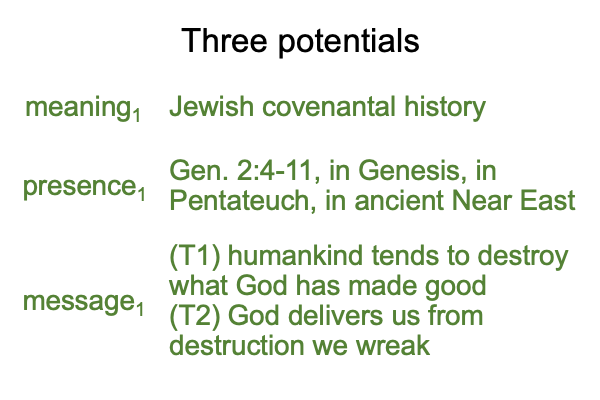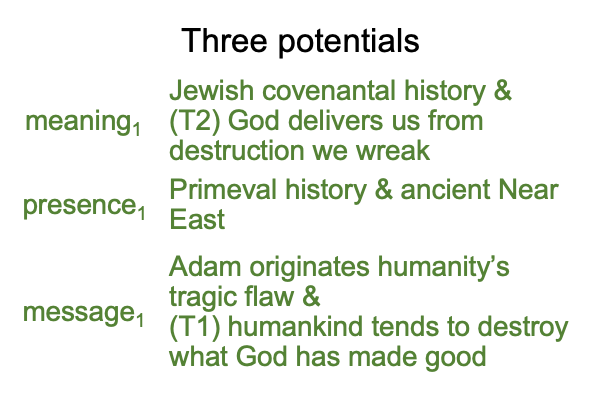0023 Craig labors to define the stories of Adam and Eve.
By the time the reader reaches the section on ancient Near East mythology, Craig sets forth the meaning1, the presence1and the message1 underlying the stories of Adam and Eve2.

0024 The meaning1 is the same as before.
The presence1 focuses on Genesis 2:4-11 and the very ancient Near East.
The message includes two themes (T1 and T2). For T1, humankind tends to destroy what God has made good. For T2, God delivers us from the destruction that we wreak.
0025 Oops. Did I forget that Adam is the originator of humanity’s tragic flaw?
I wonder, “Where does the historical Adam fit into the above figure?”
Perhaps, I can rearrange the two themes. I can join T2 with Jewish covenantal history, since this seems to go along with the point that Paul makes in Romans 5:12-21. Then, I can put the historical Adam (the one who originates humanity’s tragic flaw, bringing sin and death into our world) in with T1.
0026 Here is a picture.

0027 To me, this looks like what Craig aims for, as he enters into the section on ancient Near East mythology.
